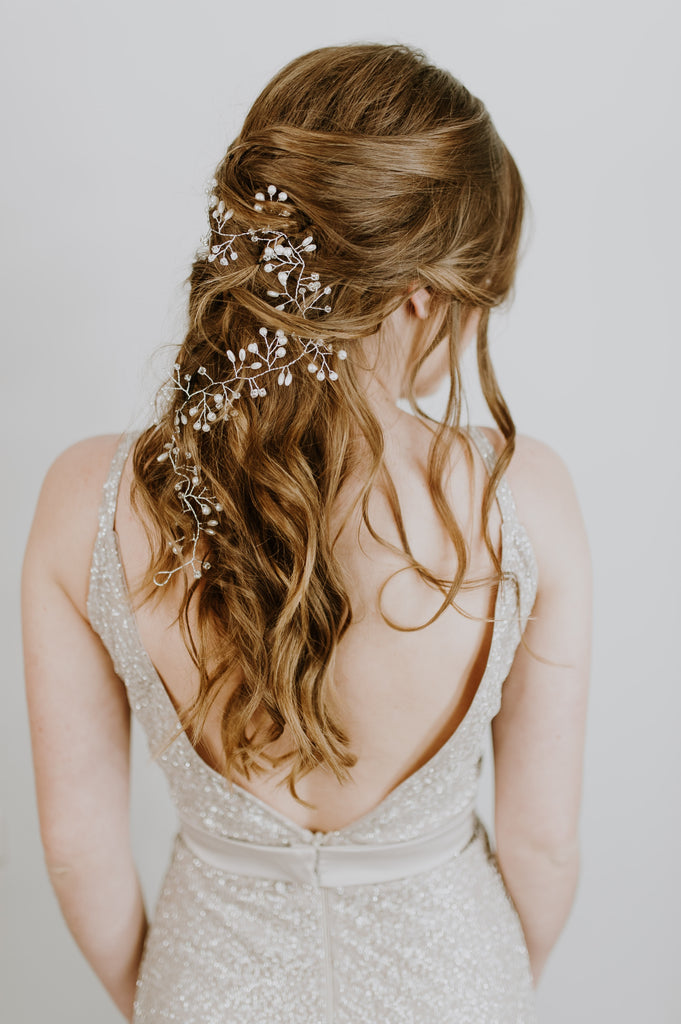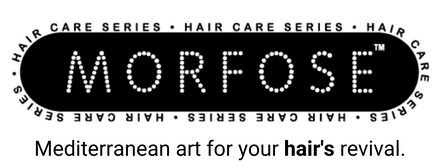Say Goodbye to Frizz: Tips for Smooth and Silky Hair
Posted by MORFOSE COSMETICS

Mastering Frizz Control for Smooth and Silky Hair
Frizz can be one of the most frustrating challenges in hair care. It often feels like no matter what you do, those flyaways and frizzy strands just won't cooperate. If you dream of having smooth and silky hair, it's time to master the art of frizz control. In this comprehensive guide, we'll explore the causes of frizz and how to tame them, introduce effective hair care practices for achieving frizz-free, silky locks, and recommend the right products, tools, and techniques for maintaining smooth and manageable hair. Say goodbye to frizz and hello to the sleek, silky hair you've always wanted.
Understanding the Causes of Frizz and How to Tame Them
To effectively control frizz, you first need to understand what's causing it:
- Humidity: High humidity levels can cause your hair to absorb excess moisture from the air, leading to frizz. To combat this, use anti-humidity hair products and styling techniques.
- Damaged Cuticles: If your hair's cuticle layer is damaged, it can't effectively lock in moisture. Deep conditioning treatments and gentle care can help repair the cuticle.
- Dryness: Dry hair is more prone to frizz. Ensure you're using a hydrating shampoo and conditioner, and consider adding a weekly hair mask to your routine.
- Heat Styling: Excessive heat styling, such as straightening or curling, can strip your hair of moisture and damage the cuticle. Use heat protectant products and avoid high heat settings.
- Harsh Products: Some hair products, especially those with sulfates and alcohol, can contribute to frizz. Opt for sulfate-free and alcohol-free products to maintain hair moisture.
Effective Hair Care Practices for Frizz-Free, Silky Locks
Now that you understand the causes, let's dive into the practices that will help you achieve frizz-free, silky hair:
- Regular Deep Conditioning: Deep conditioning treatments provide essential moisture and nourishment to your hair. Incorporate these treatments into your routine, focusing on the ends and dry areas.
- Gentle Drying Techniques: After washing your hair, gently blot it with a microfiber towel. Avoid vigorous rubbing, as it can cause friction and lead to frizz. Let your hair air dry whenever possible or use a diffuser attachment on your hairdryer to disperse airflow.
- Proper Brushing: Use a wide-toothed comb or a brush designed for wet hair to detangle your hair after showering. Start from the tips and work your way up to avoid breakage and frizz.
- Silk Pillowcase: Sleeping on a silk or satin pillowcase reduces friction on your hair while you sleep, preventing frizz.
- Low Heat Styling: If you must use heat styling tools, keep them on a low to medium setting. Use a heat protectant spray to shield your hair from heat damage.
- Anti-Frizz Hair Products: Invest in anti-frizz hair products like serums, oils, and leave-in conditioners. Apply these products to your hair to lock in moisture and create a barrier against humidity.
Products, Tools, and Techniques for Smooth and Manageable Hair
To add that finishing touch for smooth and manageable hair, consider the following products, tools, and techniques:
- Smoothing Serums: Apply a small amount of smoothing serum to your hair, focusing on the mid-length to the ends. This product adds shine and tames frizz.
- Ionic Hair Dryers: Ionic hair dryers help reduce frizz by breaking down water molecules and speeding up the drying process.
- Cold Rinse: After conditioning, rinse your hair with cold water to seal the cuticle and lock in moisture.
- Dry Shampoo: Dry shampoo can help absorb excess oil on non-wash days, maintaining your hair's smooth appearance.
- Silk Scarves or Headbands: Wearing a silk scarf or headband can help keep your hair in place and reduce friction.
- Professional Styling: Consider professional keratin treatments or other frizz-reducing services for long-term frizz control.
Mastering frizz control for smooth and silky hair is an achievable goal with the right knowledge and practices. By understanding the causes of frizz, adopting effective hair care routines, and utilizing the appropriate products and tools, you can finally say goodbye to frizz and enjoy the sleek, silky locks you've always desired.

The Battle Against Humidity
High humidity levels can transform your sleek hairstyle into a frizzy nightmare. The good news is that with the right strategies, you can combat humidity-induced frizz effectively. Here are some tips:
- Anti-Humidity Products: Invest in anti-humidity hair products such as serums, sprays, or creams. These products create a protective barrier around your hair, shielding it from moisture in the air.
- Avoid Overwashing: Excessive washing can strip your hair of natural oils, making it more susceptible to humidity-induced frizz. Try to wash your hair every 2-3 days or as needed based on your hair type.
- Hydrating Shampoo and Conditioner: Choose a hydrating, sulfate-free shampoo and conditioner. Hydrated hair is less likely to react to humidity.
- Repairing Damaged Cuticles Damaged hair cuticles are a significant contributor to frizz. If your cuticles are rough and raised, they allow moisture to penetrate your hair shaft, causing it to swell and become frizzy. To repair and maintain healthy cuticles, consider the following:
- Deep Conditioning: Deep conditioning treatments can work wonders for your hair. Look for products that contain ingredients like keratin, argan oil, or shea butter, which help smoothen the cuticle and add moisture.
- Cool Water Rinse: After conditioning your hair, rinse with cool water to close the cuticle, sealing in moisture and preventing frizz. It's like giving your hair a refreshing, cold drink.
- Combat Dryness for Silkiness Dry hair can quickly turn into a frizz fest. To keep your hair hydrated and silky, try the following practices:
- Weekly Hair Mask: Integrate a weekly hair mask into your hair care routine. Hair masks are rich in nutrients and can provide your hair with deep hydration.
- Avoid Hot Water: Hot water can strip your hair of natural oils. Use lukewarm water when washing your hair to prevent excessive dryness.
- Practicing Heat Styling Smartly Heat styling tools like flat irons and curling wands can sap moisture from your hair and damage the cuticle. If you can't avoid heat styling, here's how to do it without causing frizz:
- Heat Protectant: Always apply a heat protectant product before using any heat styling tool. It creates a protective barrier that minimizes damage.
- Lower Heat Setting: Use the lowest heat setting required to achieve your desired style. High heat is often unnecessary and can damage your hair.
- Reduce Frequency: Limit your use of heat styling tools to minimize potential damage. Opt for heatless styling methods when possible.
- The Impact of Harsh Products Harsh hair products can contribute to frizz. To maintain your hair's moisture balance, look for these product attributes:
- Sulfate-Free: Choose sulfate-free shampoos and conditioners. Sulfates can be overly harsh and drying.
- Alcohol-Free: Alcohol in hair products can be drying. Seek out alcohol-free products that won't strip your hair's natural oils.
More Than Hair Care: A Holistic Approach Achieving and maintaining smooth and silky hair goes beyond your hair care products and practices. Here's a holistic approach to hair care that ensures your locks stay frizz-free and glossy:
Balanced Diet: Eating a well-balanced diet provides your hair with essential nutrients like vitamins and proteins. Nutrient deficiencies can affect the health and shine of your hair.
Hydration: Staying properly hydrated is vital for your hair's moisture balance. Drink plenty of water to maintain hair health.
Limit Chemical Treatments: Excessive hair treatments, such as dyes, perms, and relaxers, can damage your hair's cuticle. Try to limit the use of harsh chemicals, and consider less damaging alternatives when possible.
Manage Stress: High-stress levels can lead to hair problems, including dullness and frizz. Practice stress management techniques like yoga, meditation, or mindfulness to keep your stress levels in check.
Quality Sleep: Quality sleep is essential for overall health, including the health of your hair. Ensure you're getting adequate rest, as it's during sleep that your body and hair repair and rejuvenate.
Incorporating these practices and maintaining a holistic approach to hair care will ensure that you not only master frizz control but also enjoy the benefits of silky and manageable hair. With the right knowledge, techniques, and a bit of patience, the sleek and frizz-free hair you've been longing for is well within your reach. So, wave goodbye to frizz and say hello to smooth, shiny locks that will turn heads wherever you go.


